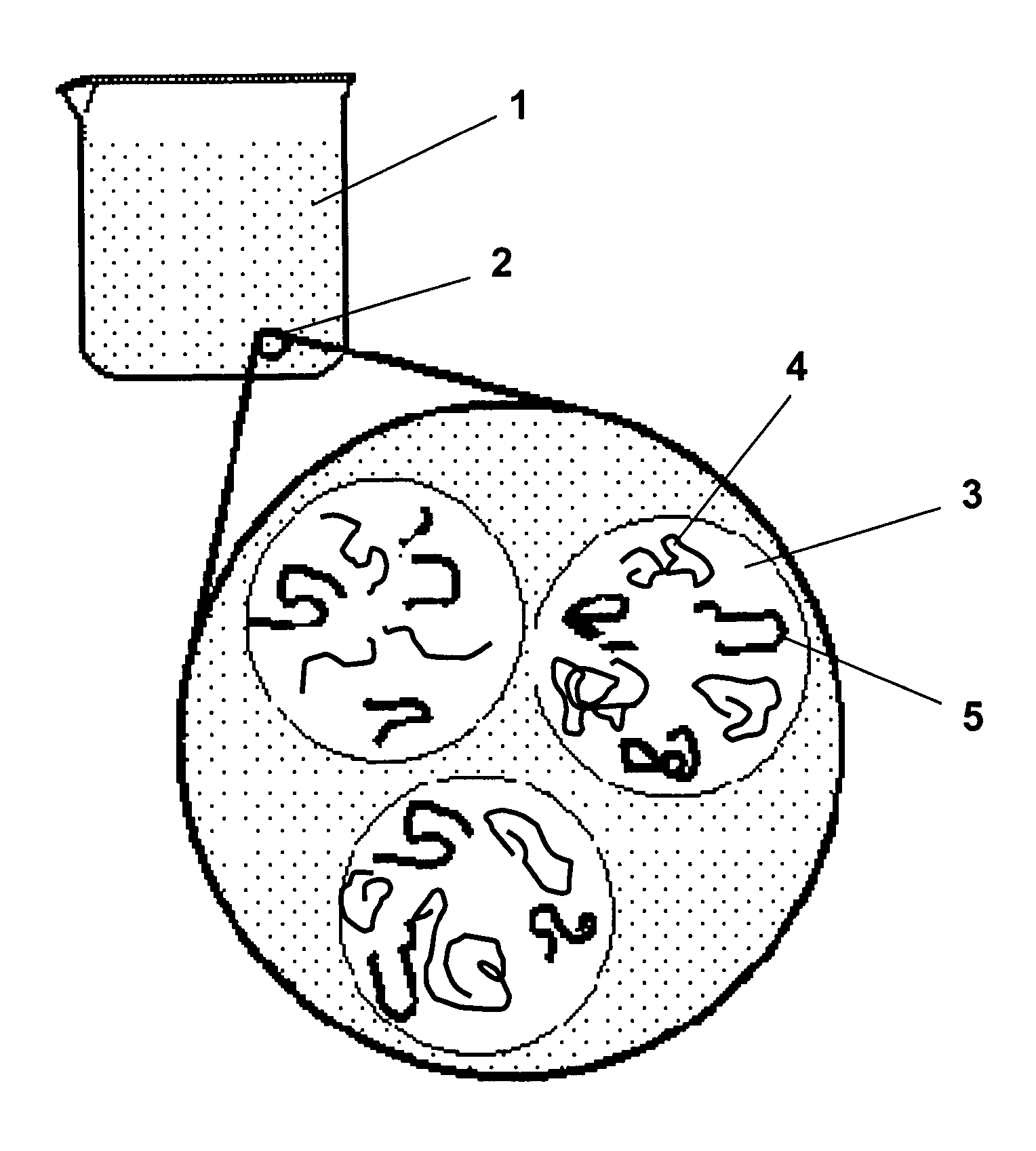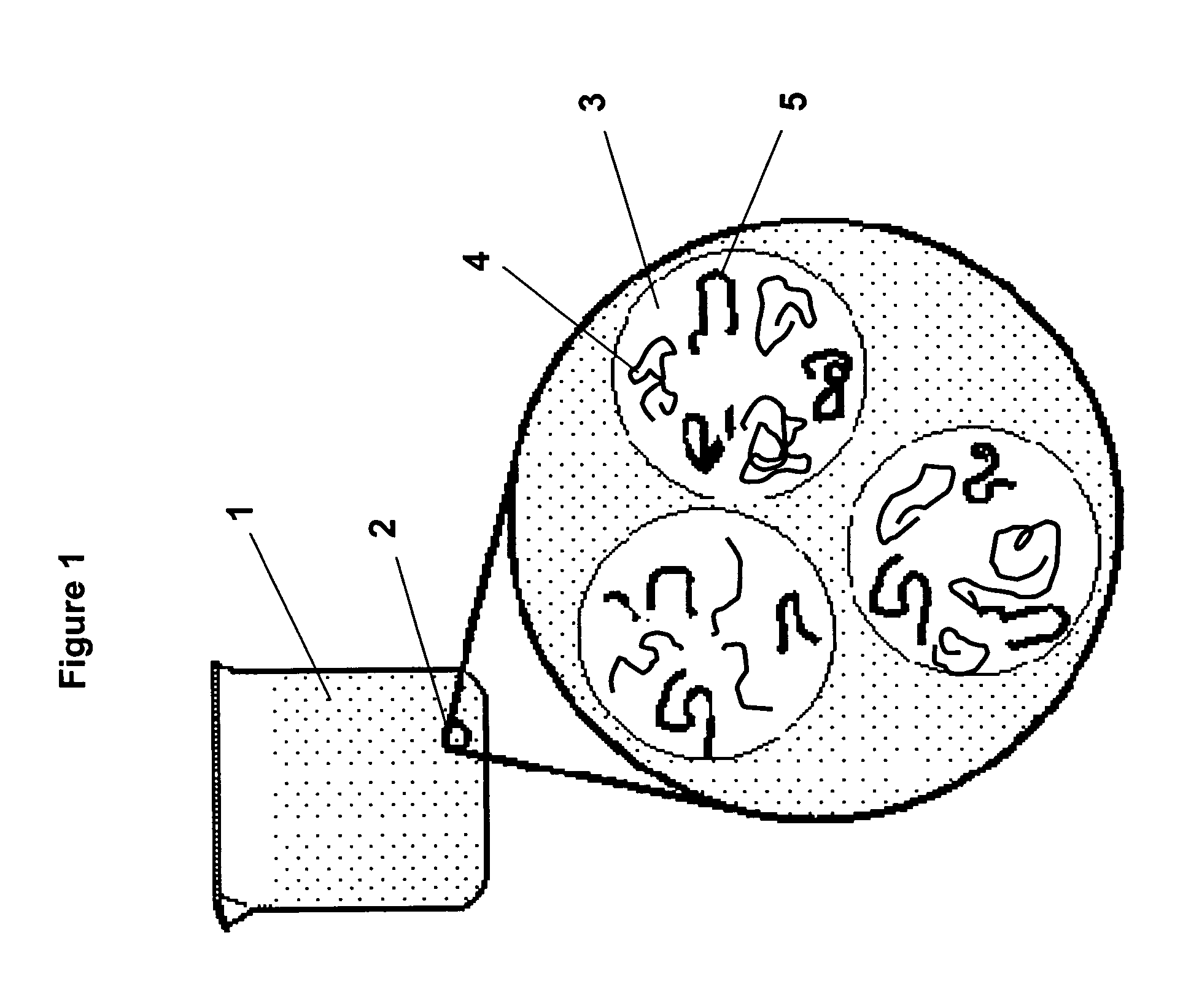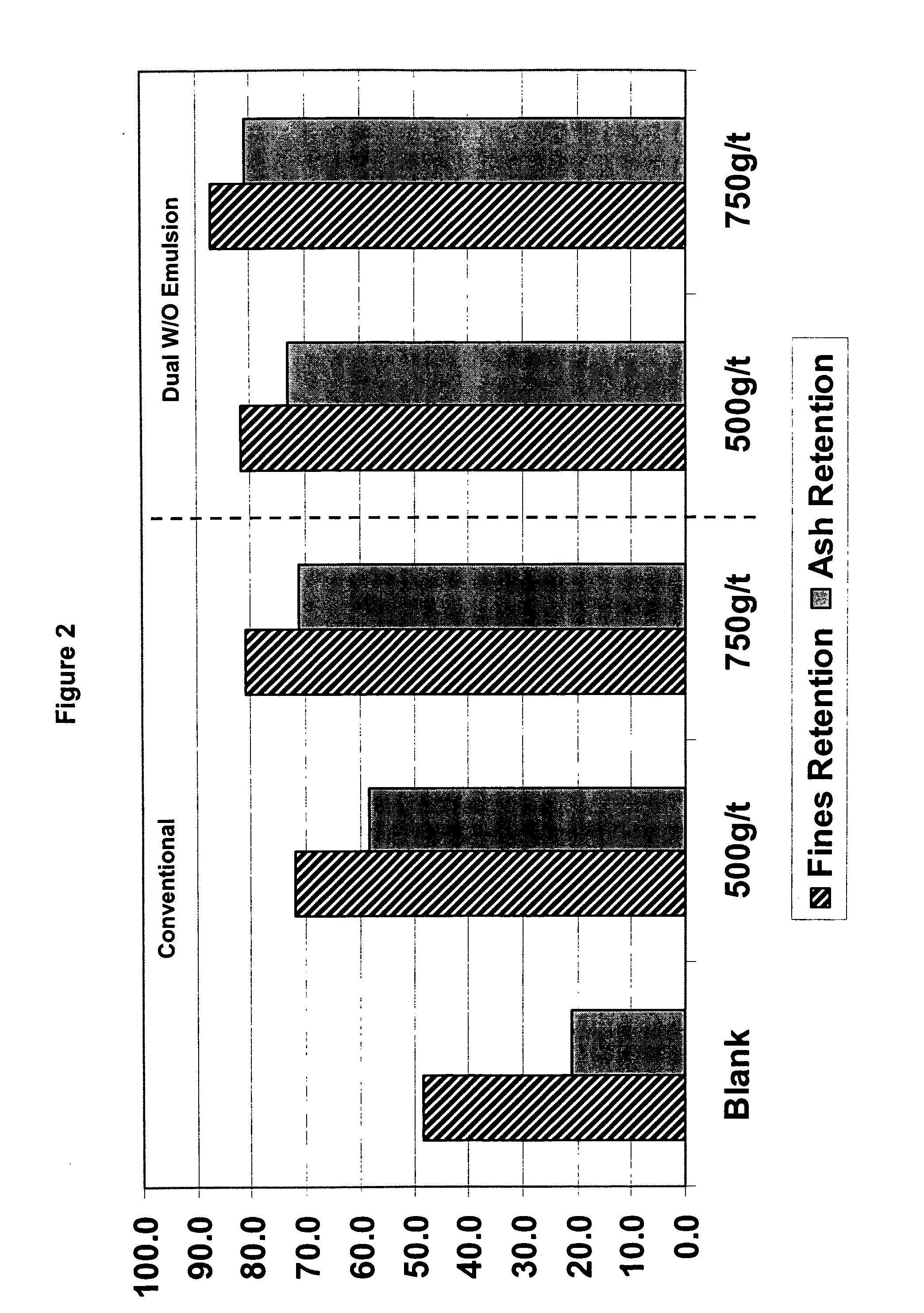Bimolecular inverse emulsion polymer
a polymer and inverse emulsion technology, applied in the field of waterinoil polymer dispersions, can solve the problems of ineffective heat dissipation, water-in-oil polymer dispersions, and practically impossible to dissolve the first cationic polymer in the water phase of water-in-oil polymer dispersions, etc., to achieve the effect of increasing the water content of the resultant mixture, increasing the viscosity, and inefficient heat dissi
- Summary
- Abstract
- Description
- Claims
- Application Information
AI Technical Summary
Benefits of technology
Problems solved by technology
Method used
Image
Examples
example 1
[0238]Preparation of First Cationic Polymer (Lower Weight Average Molecular Weight)
[0239]At first, 343 g DIMAPA quat, 215 g water and 412 g acrylamide were weighed in a 2 L vessel. A pH value of 7 was adjusted using sulphuric acid. Then the monomer solution was sparked with nitrogen for 30 min by stirring at 200 rpm. Subsequently, the aqueous solution was heated up to 65° C. and mercaptoethanol and VA-044 were added into the flask. After reaching tmax the product was stirred for 12 min further. Then an additional portion of initiator was given to the product for residual monomer burn out. Now the product was stirred for 2 h at 95° C. After that the final aqueous product was cooled down to 30° C.
[0240]Preparation of Second Cationic Polymer (Higher Weight Average Molecular Weight) in the Presence of the First Cationic Polymer in Inverse Emulsion
[0241]Firstly, the aqueous phase was built. 528 g acrylamide (50 wt %), 0.7 g Versenex 80, 238 g ADAME quat (80 wt %), 68 g water, 0.3 g formi...
example 2
[0254]A laboratory study was performed utilizing stock and white water from a mill producing high quality wall paper. FIGS. 2 and 3 show the results of this study demonstrating increased drainage and retention with the dual polymer technology according to the invention (product B according to example 1) compared to a conventional emulsion polymer with the same charge and molecular weight.
example 3
[0255]FIG. 4 illustrates the synergistic benefit of the dual water-in-oil polymer technology according to the invention (product A according to example 1) in a laboratory trial on standard recycled paper with ground calcium carbonate (GCC) as filler. In this laboratory study, 2 lb / t (1 kg / t) of a conventional low charge cationic emulsion flocculant (bottom bars) was dosed and the ash retention recorded. The experiment was repeated and the flocculant supplemented with a dose of a low molecular weight polymer and improved ash retention was observed (middle bars). In the final experiment, both previous components and dosages were held constant, however, the two polymers were applied as a dual product in which the high molecular weight polymer (second cationic polymer) was synthesized in the presence of the low molecular one (first cationic polymer), and a synergistic benefit was observed (top bars).
PUM
| Property | Measurement | Unit |
|---|---|---|
| Substance count | aaaaa | aaaaa |
| Dispersion potential | aaaaa | aaaaa |
| Molecular weight | aaaaa | aaaaa |
Abstract
Description
Claims
Application Information
 Login to View More
Login to View More - R&D
- Intellectual Property
- Life Sciences
- Materials
- Tech Scout
- Unparalleled Data Quality
- Higher Quality Content
- 60% Fewer Hallucinations
Browse by: Latest US Patents, China's latest patents, Technical Efficacy Thesaurus, Application Domain, Technology Topic, Popular Technical Reports.
© 2025 PatSnap. All rights reserved.Legal|Privacy policy|Modern Slavery Act Transparency Statement|Sitemap|About US| Contact US: help@patsnap.com



